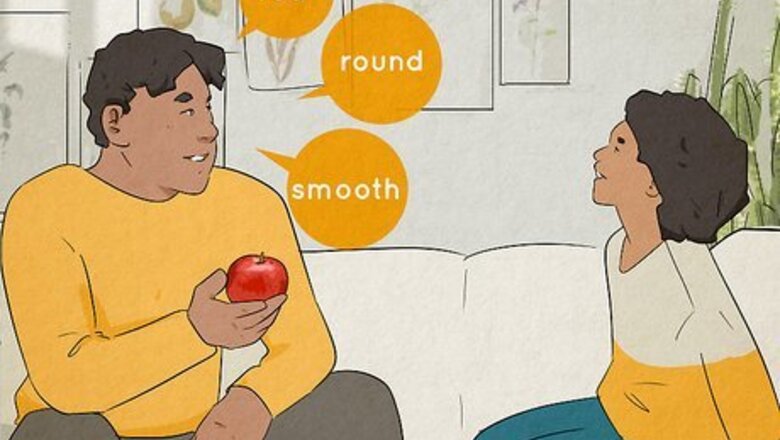
views
X
Research source
Help your child boost their perceptual reasoning by doing a few basic exercises and creating a home environment that encourages sensory learning. If your child needs extra help, consider working with an occupational therapist or special education teacher.
Doing Perceptual Reasoning Exercises
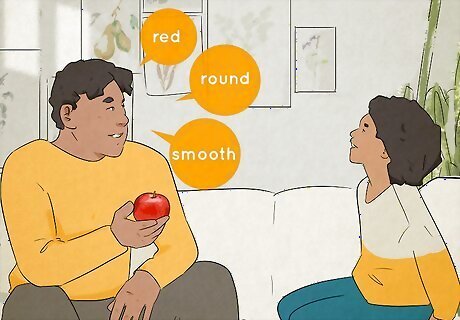
Teach your child spatial vocabulary. If kids have the words to describe an object they are seeing or manipulating, it can help them think about it in more complex ways. From an early age, teach your child words that describe shape, size, texture, and the spatial relationships between objects, such as: 2 and 3-dimensional shape words, like “triangle,” “circle,” “cube,” “sphere.” Shape descriptors, such as “curved,” “straight,” or “round.” Texture words, like “smooth,” “rough,” “soft,” or “bumpy.” Words that describe spatial relationships, like “under,” “over,” “near,” “far,” “left,” and “right.” Comparative words, like “bigger,” “smaller,” “shorter,” “longer.”
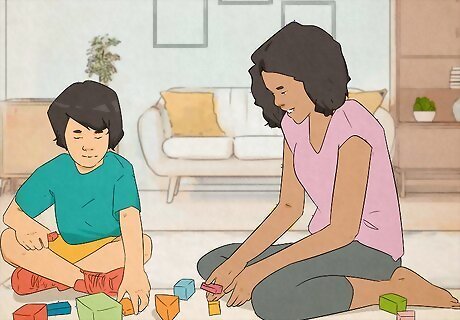
Have your kids play with blocks. Block play is a great way to develop fine motor skills and spatial perception. Provide a variety of different types of blocks and other building toys. Encourage your kids to both play freely and build specific structures (e.g., houses, bridges, or forts). Get your child more excited about block play by joining in. You might come up with a story and work together with your child to create a “set” for the story. Have your child combine block play with other toys. For example, you could say, “Let’s build a castle for your dolls! We should give it a moat and drawbridge so that the dragon can’t get in.”
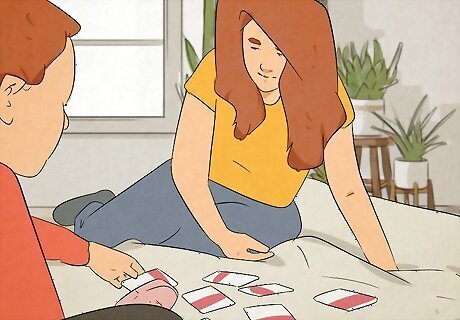
Play memory games. These types of games encourage close observation and boost visual memory. There are numerous ways to play, but most memory games involve laying out a set of cards face down, and trying to find all the matches by turning over two cards at a time. You can use a deck of regular playing cards, or get a set of picture cards specially designed for memory or matching pairs games. Spot-the-difference games are also a great way to get your child thinking visually. Look for spot-the-difference card games or apps designed for kids. Another great game is "I-spy." This game helps kids learn how to identify objects based on descriptors, rather than a name. They'll learn to describe the objects themselves, and they'll have fun guessing what your object is.
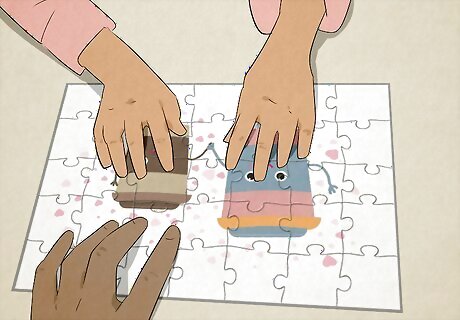
Put together a puzzle. Puzzles help kids recognize patterns and understand the relationships between shapes. Work together with your child to put together jigsaw puzzles, or encourage them to solve tangrams (a type of puzzle that involves putting together geometric shapes to create a larger shape). You can also try 3-D puzzles or model making, which push these skills even further.
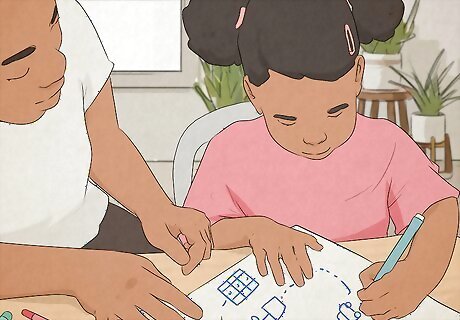
Teach your child to use and make maps. Working with maps encourages children to think spatially. Draw a simple map of your child’s room, your living room, or the back yard. Mark out the location of something on the map – such as a toy that you have placed in a particular part of the room – and have your child attempt to find it. As your child gets more comfortable using simple maps, encourage them to make their own.
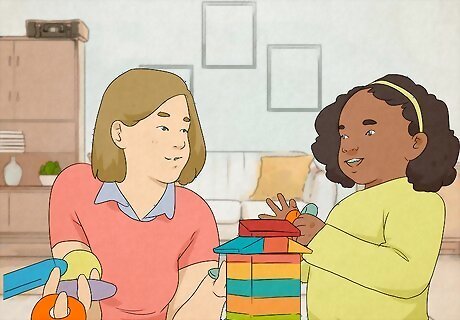
Play pattern-matching games. Build a structure out of blocks, or draw a “blueprint” on paper, and have your child build a matching structure. Work together with your child, and encourage them to discuss their choices and strategies as they go. Using “spatial talk” will help your child think about and understand what they are doing in a more structured way. For example, you might say, “That’s an interesting choice. Why did you use two shorter blocks there instead of one long one?” or “Would it be more stable if we staggered the bricks, like this?”

Let your child play video games, in moderation. This may seem counter-intuitive, especially if you are always struggling to minimize your child’s screen time. However, when played in moderation, video games can be beneficial to kids. Puzzle games, such as Tetris, help build perceptual reasoning skills and increase processing speed and reaction time. Action games have also been shown to improve spatial perception and problem-solving skills. While video games can be beneficial, they can also eat up your child’s time and interfere with other activities. Limit your child’s time playing video games to a few hours a week. The American Academy of Pediatrics recommends against exposing children under the age of 2 to any kind of screen time. There is no clear evidence that video games are beneficial to children before the age of 3.

Use everyday moments as learning opportunities. Encourage your child to actively explore and observe the world around them. You can do this by encouraging them to touch and handle objects. Ask them questions about the shapes, textures, and spatial relationships between objects that they encounter on a daily basis. For example, you might ask: “What shape would I get if I cut your sandwich this way? How about like this?” “Wow, feel the bark on this tree! How does it feel to you?” “What do you think is the best way to fit your toys into this box?”
Creating a Good Learning Environment
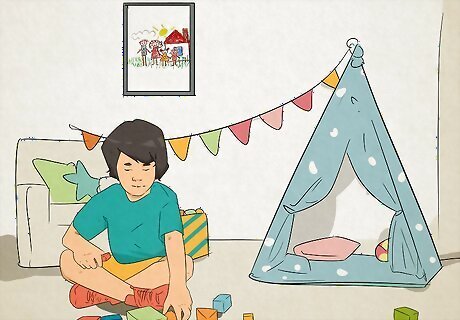
Make your child’s space visually interesting. Young children learn by observing and exploring the world around them. Keep your child engaged in their environment by giving them interesting things to look at. Hang a few pictures or posters in your child’s room, and pick out colorful furniture. Encourage your child to talk about and describe the objects in their environment. Allow your child to add things they find interesting to their space. While lots of visual stimuli are great in areas where your child plays and relaxes, don’t over-clutter areas where your child works. Your child may become distracted if there are too many things to look at.
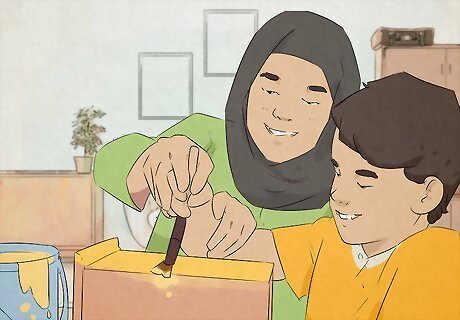
Provide toys that promote sensory play and motor development. Building blocks and construction toys, sorting toys, puzzles, modeling clay, and “busy toys” (like bead mazes) are all good choices for helping your child develop their perceptual skills. Select toys that are appropriate for your child’s age range. Look at the suggested age range on the toy’s packaging, or ask a teacher or pediatrician for suggestions.
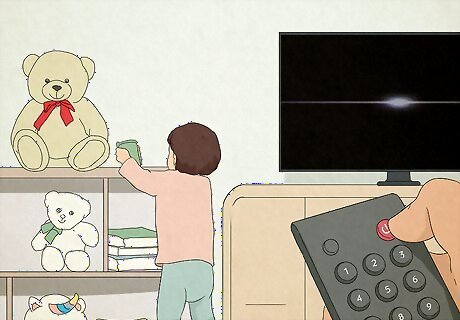
Keep distractions to a minimum. When your child is working on a project, whether it’s putting together a puzzle, making art, or doing homework, help them concentrate by providing a distraction-free environment. Give your child a quiet, uncluttered workspace. Turn off the TV, and if you choose to play music, choose something soothing that doesn’t have lyrics.
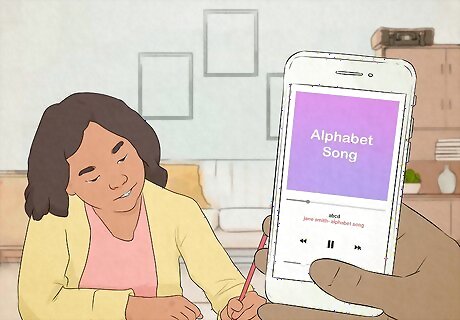
Play music for your child. Music plays an important role in children’s cognitive development. Quiet, soothing music can increase concentration, while fun and upbeat music can get your child moving and help build gross motor skills. In addition, there is evidence that early music training can improve a child’s perceptual logic and spatial reasoning skills. Play music for your child every day, and encourage them to dance, sing, or play along. If you are trying to help your child concentrate, try playing quiet classical music without vocals, like a gentle Chopin Nocturne or one of Bach’s soothing Cello Suites. To encourage your child to get up and move, try a bouncy dance number like “Happy” by Pharrell Williams, or “Twist and Shout” by the Beatles.
Getting Help from a Professional

Have your child’s perceptual reasoning assessed. If you are concerned about your child’s perceptual reasoning abilities, consider having them take a standardized intelligence test. The WISC-IV is a test that assesses several types of reasoning and intelligence in children, including perceptual reasoning. Ask your child’s doctor or teacher about arranging a WISC-IV test for your child. You may need to have your child’s perceptual reasoning tested if they struggle with fine motor skills and spatial awareness or become easily agitated when exposed to nonverbal stimuli. Children with perceptual reasoning issues may also have trouble in social situations because they do not pick up on subtle facial expressions and other nonverbal cues.
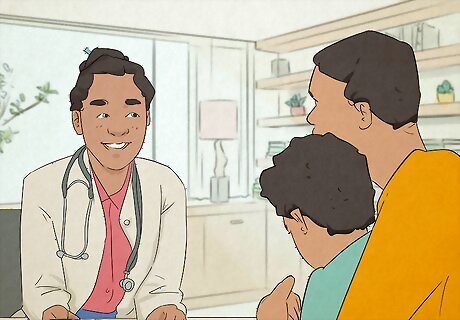
Talk to your child’s pediatrician. If you have any concerns about your child’s cognitive development or perceptual abilities, make an appointment with your pediatrician. They can help determine if there are any underlying issues that may be creating extra challenges for your child, such as a vision or hearing impairment. Your pediatrician may also be able to refer you to a specialist who can help.

Work with a special education teacher. If your child faces challenges with perceptual reasoning, discuss these issues with your school psychologist. If your school offers special education services, work with the special ed teacher to develop an individualized education plan that focuses on developing your child’s perceptual reasoning skills.
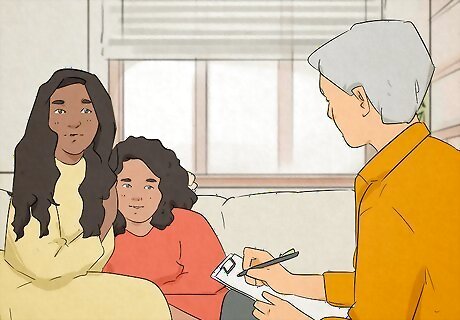
Take your child to an occupational therapist. Occupational therapists are specialists who help people deal with physical, cognitive, and sensory disabilities and challenges. If your child needs extra help with perceptual reasoning, take them to an occupational therapist who specializes in working with children. Your pediatrician or your child’s teacher or school psychologist may be able to help you find an occupational therapist for your child.










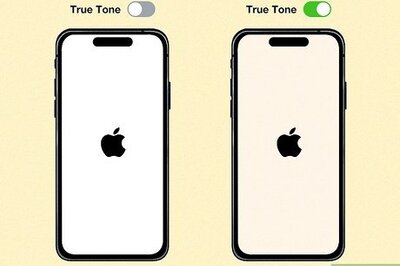






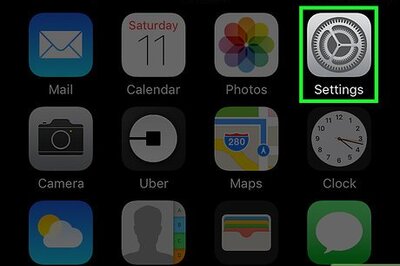
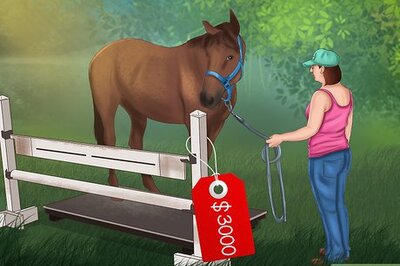

Comments
0 comment